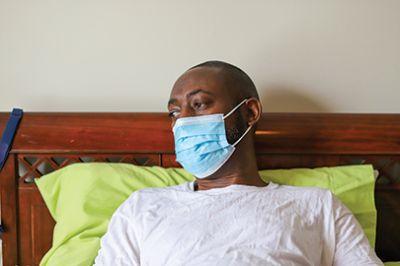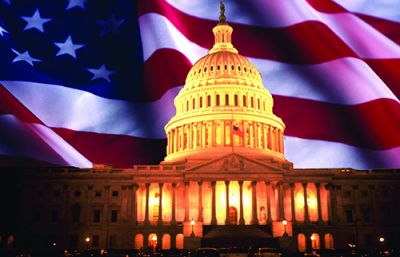Go beyond the data and science of COVID-19, write the stories of people affected
Al Cross
Dec 1, 2020


What is the proper role of community newspapers at a time of national crisis?
Stand up for the truth. And for community.
This isn’t about the election, or about the presidential transition, which hopefully will have begun by the time you read this. It’s about the novel coronavirus.
With winter and the holiday season here, the virus is out of control, especially in rural areas, and we’re more at risk than ever — partly because millions of Americans have mistaken beliefs about it.
The most extreme example we’ve seen: A South Dakota emergency-room nurse told CNN that she has seen many COVID-19 patients continue to deny that the virus exists, right up until they die from it. (That’s in a story on The Rural Blog at tinyurl.com/y3b98e92.)
Changing strongly held beliefs is not a job for newspapers. But not all beliefs are strongly held, and a lot of people aren’t sure what to believe — partly because social media dominates the debate and amplify the extremes.
Journalists can still play their traditional filtering and moderating roles as they provide factual information, and community newspapers are in an ideal position to do that because they have a higher level of trust among their audiences than news outlets in larger communities.
However, many community editors are naturally reluctant to get too far into the business of telling people what to do or what to believe, especially on a topic that is so politicized and so divisive — and probably growing more so in places where surges in cases have led to new restrictions.
Editors from Rapid City, South Dakota, and Lincoln, Nebraska, said on CNN’s “Reliable Sources” Nov. 22 that they have three kinds of readers, as Lincoln Journal Star Editor Dave Bundy described them: those who say "Just give me the data;" those who say "Tell me what I can and can’t do;" and those who say "Don’t tell me what I can and can’t do. … There’s COVID fatigue, there’s COVID conspiracy; there’s a lot of things at work." (See tinyurl.com/y6eza5fk.)
Most pandemic coverage in community newspapers seems to be about data: numbers of coronavirus cases, COVID-19 hospitalizations and so on. In chronological context, that conveys the local magnitude of the pandemic. But there are fewer stories about why the numbers are going up; is it bars, restaurants, social gatherings or what?
Health officials have some idea of that through their contact-tracing efforts. Unfortunately, many state and local health agencies haven’t done the best job of explaining the “why” or the specific reasons for emergency orders, such as mask mandates, or the research that supports them. They may make a point once or twice, but even important points need repeating to have impact.
Newspapers can and should do all of that, as well as debunk common misconceptions about the virus and measures to thwart it. Plenty of good information is available, but often it needs to be translated for general audiences. Too often, local newspapers just fill a hole with a medical article that is too dense or too long to get much readership.
Translating such information for the local audience is important. Stat, the medicine-and-science publication of The Boston Globe, says “Retention of health messaging is lower in rural areas,” so “It must be tailored to communities, recognizing cultural norms and engaging local community leaders.” The Rural Blog excerpted that article at tinyurl.com/y497gttq.
Newspapers need to go beyond the data and the science and write the stories of people affected by the virus, such as the health-care workers who are fighting it, to bring home how serious it can be. With urban hospitals filling up, they can’t accept COVID-19 patients who need to be transferred for a higher level of care, so “People are going to die,” the hospital chief of staff in Canadian, Texas, told The Canadian Record. The Rural Blog excerpted Laurie Ezzell Brown’s story at tinyurl.com/y6kgd3ka.
Laurie put that story on her editorial page, and it’s an example of the leadership that newspapers need to exercise at a time like this. Too many local officials, fearful of controversy, aren’t leading enough on the issue, and in many communities, they could use some bucking up. A well-argued editorial can do that. It can also be a voice of reason at a time when people are upset about new state mandates, as Les Zaitz of the Malheur Enterprise in very rural eastern Oregon showed in an editorial published on The Rural Blog at https://bit.ly/3o9TQN9.
Les wrote, “Those who doubt the virus is real or serious are deluding themselves and likely putting their families and friends at risk. ... Too many people are still clinging to the fallacy that is it their right not to wear a mask and to hold large family gatherings. Every credible medical expert, from Dr. Anthony Fauci to our local hospital professionals, say the simple act of wearing a mask is now the single most important step we can all take. ... We need to react as if a wildfire is burning towards town, threatening every home. We need to act as if we’re being invaded by an enemy — which we are.”
Of course, the people who most need this information are likely those who aren’t newspaper readers and who are most likely to be misled by other media. So, to reach every household in your county, you should try a sample-copy edition, perhaps subsidized by local governments or health agencies. At least two newspapers in Kentucky have done this, and it’s helped their counties keep infections down.
Some might think wading into this battle is bad for business at a time when business is already bad. Yes, that could be a risk, and each local publisher and editor has the best sense of that, so they must steer their own course. But what they cannot do, in my opinion, is ignore the fundamental changes in our media landscape. Social media sites are flooding us with divisive opinion and must be countered with a flood of facts, from trusted sources. Those are you.
Al Cross edited and managed rural newspapers before covering politics for the Louisville (Kentucky) Courier Journal and serving as president of the Society of Professional Journalists. He is the extension journalism professor at the University of Kentucky and director of its Institute for Rural Journalism and Community Issues, which publishes The Rural Blog at http://irjci.blogspot.com.









